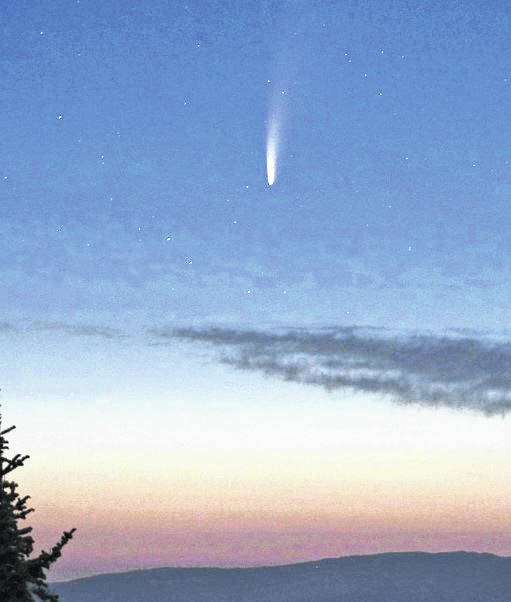
Not since comet Hale-Bopp dazzled the night skies some 23 years ago has another visitor from the fringes of the solar system piqued interest in backyard astronomy, or been suspended so visibly in the night sky.
Officially, it’s known as Comet C/2020 F3 NEOWISE, named after NASA’s Near-Earth Object Wide-field Infrared Survey Explorer mission.
The spacecraft discovered the three-mile wide hunk of ice and rock on March 27 while surveying the skies from earth orbit.
The space agency said Comet NEOWISE was the brightest comet to come into view of earth since Hale-Bopp in March 1997, which was encouraging news to backyard astronomers who were disappointed by the faintness of Halley’s Comet in 1986, or Kohoutek, which was barely visible to anyone except the final Skylab space station crew in the winter of 1973.
The comet will be visible for the next several days to amateur Highland County astronomers as it moves through the inner solar system and eventually speeds back into the deep freeze of outer space.
If Mother Nature cooperates, NASA said those hoping to catch of glimpse of what some call the “Great Comet of 2020” can see it with both the naked eye, binoculars or a small telescope after sunset in the northwest sky.
Without binoculars, Comet NEOWISE will resemble a fuzzy star with a hint of a tail arching upwards.
With an average pair of binoculars, armchair star gazers should be able to see a clearly defined “coma,” the cloud of dust that surrounds the nucleus, and a whitish tail extending upward.
To see the comet in the dark skies of Highland County, NASA advises:
• Make sure the weather cooperates. The National Weather Service is forecasting chances of rain and storms through Friday. The weekend is predicted to be hot and muggy, but with clear skies. NASA said the comet’s closest approach to the earth will be 64 million miles Thursday.
• Get away from the light pollution of cities and towns, locating a spot with an obstructed view of the northwestern sky. The late astronomer and space scientist Carl Sagan called it “good seeing.”
• Go out after sunset and allow your eyes to become adjusted to the dark, then locate the Big Dipper in the northwest sky. Look below and to the left of the constellation until a fuzzy star comes into view.
• Use binoculars or a small telescope to get the best view of this “once in your lifetime” celestial object.
Each night through the end of July, the space agency said the comet will continue rising higher above the northwestern horizon until it completely fades from view.
According to NASA, Comet NEOWISE is in a highly elliptical orbit around the sun and won’t return to the vicinity of Earth for another 6,800 years.
In contrast, the space agency said the most well-known of the comets, the one named after Sir Edmund Halley, will return in 41 years in the summer of 2061.
Reach Tim Colliver at 937-402-2571.


